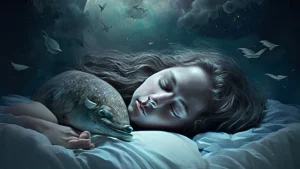Spoilers for this article
- ashwagandha (type of Indian cactus)Effect of: ashwagandha (type of Indian cactus)has a relaxing andsleepThis herb is expected to have a positive effect on the quality of thestressIt is based on its relationship to hormones and its role as an adaptogen.
- ashwagandha (type of Indian cactus)Points of Intake: What is the appropriate dosage and timing of intake?ashwagandha (type of Indian cactus)key to maximizing the benefits of the product. In particular, ingestion at night tends to produce deep sleep, while ingestion during the day may cause drowsiness.
- important point: ashwagandha (type of Indian cactus)has many advantages, while other drugs andsupplementWhen used in combination withinteractionand warnings also exist regarding ingestion before activities that involve driving or operating. The emphasis is on ingestion with appropriate knowledge and caution.
."ashwagandha (type of Indian cactus)Does drinking "The Sleepy Man" really help me sleep better?"
."ashwagandha (type of Indian cactus)Is it safe to ingest the othersupplementDoes it affect my driving and use with?"
."ashwagandha (type of Indian cactus)How can we maximize the effectiveness of the
Have you been feeling tired lately?
ashwagandha (type of Indian cactus)to heal your tired body and mind,sleepThe quality of the product may improve the quality of the
ashwagandha (type of Indian cactus)By ingesting a bettersleepYou may have an energetic day at the

sleepis super important.
sleepPlease read to the end if you want to improve the quality of
What is ashwagandha in the first place?

ashwagandha (type of Indian cactus)(scientific name: Withania somnifera Dunal) has been used for thousands of years in Ayurveda, the traditional medicine of India, to treat both physical and mental health problems.stressThe herb has been used as an effective medicine, tonic, and even aphrodisiac.
Nowadays, the effectiveness of these products has been proven by modern science through various clinical studies, and they are attracting attention.
The fruit is an evergreen shrub of the eggplant family. The name comes from the horse's (ashwa) smell (ganda).
Some say it is named after the robust vigor of horses.
▼Recommended Articles

The relaxing effects of ashwagandha
ashwagandha (type of Indian cactus)(Withania somnifera) has a relaxing effect due to its unique ingredients andstressIt is trusted by many for its palliative effect.
Relationship to stress hormones
ashwagandha (type of Indian cactus)iscortisolsaidstressIt has the effect of reducing hormone levels.

ashwagandha (type of Indian cactus)The ingestion of thiscortisoland adjust the amount ofstressRelief of physical and mental health problems caused byThe effect of this is expected to be to
Role as an adaptogen
ashwagandha (type of Indian cactus)school (e.g. of ikebana)adaptogenIt is known as one of the

Adaptogens are the body'sstressand natural substances and plants that enhance the ability to respond to external factors.

Specifically, adaptogens are the body'shomeostasis(internal environmental stability).
ashwagandha (type of Indian cactus)The role of the body as an adaptogen ofCalm and balancedThe goal is to keep it at a

In other words, excessivestressIt acts like a barrier to protect the body from fatigue and
Benefits of a good night's sleep
Improved mental health
- stressmitigation: Goodsleepschool (e.g. of ikebana)stressHormones.cortisoland refreshing mood (Smith et al., 2002).
- Emotional Adjustment: sleepLack of it is anger andirritationmay increase, and good qualitysleepcontributes to emotional stability.
Mechanisms by which good sleep contributes to emotional stability
- REM (rapid eye movement)sleep: During this period, the brain processes and organizes the day's events and emotions.
- stressHormone Levels: good qualitysleepschool (e.g. of ikebana)cortisolor some suchstressLower hormone levels.
- Emotional stability: stressEmotional stability due to reduced hormones.
- Short, shallowsleepImpact of: Insufficientsleepis the result of emotional instability andstressMay cause an increase in levels.
Improved physical health
- immunityStrengthening of: sufficientsleepenhances immune function and improves resistance to colds and infections.
- weight control: sleepis sufficient has been shown to facilitate better dietary control and reduce the risk of obesity.
Improved brain function and memory
- Memory enhancement: REM (Rapid Eye Movement)sleepDuring, it is believed that learned information is transferred to long-term memory.
- (powers of) concentrationIncrease in: Fullsleepis the next day's(powers of) concentrationand productivity.
Longevity and Quality of Life
- Decrease in disease risk: Studies have shown that it reduces the risk of chronic diseases such as heart disease and diabetes.
- Improved quality of life: sleepis enhanced, overall quality of life improves and performance in social and work activities increases.
Scientific Background on Ashwagandha and Drowsiness
ashwagandha (type of Indian cactus)(Withania somnifera) is widely known to promote drowsiness and relaxation due to its constituents.
Ingredients in Ashwagandha and their actions
ashwagandha (type of Indian cactus)It is a major component ofwithanolidis a neuroprotective andantioxidant actionStudies have shown that there are

Withanolid also acts on the central nervous system by activating GABA receptors,Promotes relaxation and sleepinessIt has been suggested that the

Biological mechanisms that promote sleepiness and relaxation
ashwagandha (type of Indian cactus)The following are possible mechanisms by which the "Mere Old Man" promotes drowsiness and relaxation.
- Activation of GABA receptors: GABA (gamma-aminobutyric acid) is an inhibitory neurotransmitter in the central nervous system; when its receptors are activated, neuronal excitation is reduced, causing relaxation and drowsiness.
- cortisolDecrease in: As previously mentioned,ashwagandha (type of Indian cactus)school (e.g. of ikebana)cortisolThis has the effect of reducing the level ofcortisolis thought to promote drowsiness due to its reduction, since excessive secretion of
- Antioxidant effect: ashwagandha (type of Indian cactus)Antioxidant components instressand reduces the relaxing effect and goodsleepIt is believed to support the
Actual drowsiness during ashwagandha ingestion
ashwagandha (type of Indian cactus)to see how many people actually feel drowsy when ingesting the drug, and whether the intensity of drowsiness varies depending on the time of day and other conditions of ingestion.
Percentage and statistics of people who feel sleepy

ashwagandha (type of Indian cactus)of those who ingestedsleepNumerous studies have shown that the quality of

However, this is a matter influenced by various factors such as intake, body constitution, and other lifestyle factors, and not all people feel sleepy in the same way.

but as per the article below,managerschool (e.g. of ikebana)ashwagandha (type of Indian cactus)On the day that you start taking thesleepI felt and experienced an improvement in the quality of the
300mg120ベジタリアンカプセル-レビュー-3-300x169.jpg)
Time of day and conditions that make you more drowsy when ingested during the day
- Intake after evening: Later in the eveningashwagandha (type of Indian cactus)When ingested, its relaxing and sleep-promoting effects can be seen in the evening'ssleepThe quality of the product may improve the quality of the
- Intake on an empty stomach: ashwagandha (type of Indian cactus)is taken before a meal or on an empty stomach, it has been suggested that its components are rapidly absorbed, increasing the likelihood of feeling drowsy.
- Ingestion of high doses: Exceeding the generally recommended intake may intensify the effects of drowsiness. Avoid overdose.
Ashwagandha and Sleep Quality
ashwagandha (type of Indian cactus)(Withania somnifera) is,sleepIt is widely known that the quality of
Effect on sleep quality
- cortisolDecrease in: As already mentioned,ashwagandha (type of Indian cactus)school (e.g. of ikebana)stressIt's hormonal.cortisollevels have been observed to reduce the level of This assists in falling asleep in a more relaxed state andsleepThe quality of the product may improve the quality of the
- Activation of GABA receptors: Activation of GABA receptors suppresses excitation of the central nervous system and promotes relaxation, thus stabilizingsleepIt is believed to lead to


Effect on depth and duration of sleep
- sleepDepth of: ashwagandha (type of Indian cactus)The intake of REM (rapid eye movement)sleepSome studies suggest that prolonging the duration of This is,sleepIt is believed to increase the depth and restorative effect of the
- Extension of duration: ashwagandha (type of Indian cactus)ingestion of the drug reduces the number of awakenings during the night, and the continuous, longsleepIt has been reported that time is gained.

Points to note
ashwagandha (type of Indian cactus)While there are many benefits to the consumption of "IQ", there are a few points that should be noted in its use.
In particular, the timing of ingestion and the use of other drugs andsupplementLet's take a closer look at the use of this product in combination with and ingestion before activities that involve driving or operating a vehicle.
Best time to take ashwagandha
- fasting: Generally speaking, it is best to take it on an empty stomach before a meal to maximize its effectiveness.
- at night: Take advantage of drowsiness and relaxation to get a good qualitysleepIt is recommended that it be taken before bed, but not immediately before, in order to obtain
Drugs or supplements that should not be used together
- Sedatives:. ashwagandha (type of Indian cactus)has a naturally relaxing effect, there is a risk of excessive drowsiness and deep sleep when used in conjunction with sedatives and sedating drugs.
- thyroid glandhormone: ashwagandha (type of Indian cactus)school (e.g. of ikebana)thyroid glandBecause of the possibility of stimulating the activity ofthyroid glandUse in combination with hormonal agents requires consultation with a physician.
- Antihypertensives and diabetes medications: ashwagandha (type of Indian cactus)can affect blood pressure and blood glucose, so caution should be exercised when taking these drugs together.
Warning regarding ingestion prior to activities involving driving or operating
ashwagandha (type of Indian cactus)may cause relaxation and drowsiness, it is strongly recommended to avoid activities such as driving a car or operating heavy machinery after ingestion.
Avoid activities that involve driving or operating the vehicle for several hours afterward, especially when taking it for the first time or at high doses.
Ashwagandha Research Results
ashwagandha (type of Indian cactus)There have been numerous studies on, among others, drowsiness andsleepThere has been a focus on scientific verification of the effects regarding
Below is a summary of the major findings of the study, as well as some additional questions and unanswered points.
Major studies and results on sleepiness and sleep
- ashwagandha (type of Indian cactus)andsleepquality of a food: In a 2019 study by Langade et al,ashwagandha (type of Indian cactus)takers and placebo takers,sleepThe report showed an improvement in the quality of the
- ashwagandha (type of Indian cactus)andsleepDepth of: In a 2017 study by Kaushik et al,ashwagandha (type of Indian cactus)Triethylene glycol, a component of REMsleepIt was suggested that the duration of the
- ashwagandha (type of Indian cactus)and relaxing effect: In a 2015 study by Candelario et al,ashwagandha (type of Indian cactus)was reported to activate GABA receptors and inhibit excitation of the central nervous system.
Questions and unanswered points
- Relationship between intake and effectiveness: ashwagandha (type of Indian cactus)intake and drowsiness andsleepThe relationship between the effect on quality of the product is not entirely clear. Consistent guidelines on appropriate dosage and frequency are needed.
- Effects of long-term intake: ashwagandha (type of Indian cactus)There are limited data on the effects and safety of long-term ingestion of Long-term ingestion may cause drowsiness andsleepFurther research is needed to determine how the quality of
- individual differences: Depends on the individual's constitution and health,ashwagandha (type of Indian cactus)It is possible that the effects of the two may differ. Research on this is still lacking.
summary

How was it? I would like to conclude by summarizing the contents of this article.
- ashwagandha (type of Indian cactus)Basic Information on: This herb is particularlysupplementand ... andfine powderThe format is used,stressEasing andsleepIt is believed to be effective in improving the quality of
- Relaxation andstresshormone: As an adaptogen,ashwagandha (type of Indian cactus)school (e.g. of ikebana)stressIt interacts effectively with hormones and promotes a state of relaxation.
- Scientific Background: ashwagandha (type of Indian cactus)The ingredients contained in thesleepand biological mechanisms for relaxation have been scientifically shown to be affected.
- Actual experience of drowsiness: A certain percentage of peopleashwagandha (type of Indian cactus)They report feeling drowsy after ingestion, and the timing and conditions of this feeling.
- sleepquality of a food: According to the study,ashwagandha (type of Indian cactus)school (e.g. of ikebana)sleepmay have certain positive effects on the quality, depth, and duration of
- Points to note: ashwagandha (type of Indian cactus)and the appropriate timing for taking it, as well as some cautions such as drugs that should not be taken in combination or before driving or other activities.
- findings: sleepand against drowsinessashwagandha (type of Indian cactus)We have also presented the results of the major studies on the effects of the "Mere Old Man," but there are still many unanswered questions.
- Optimal intake method: ashwagandha (type of Indian cactus)for the most effective use of the product and the recommended method of intake.

That's all for this article. Thank you for reading to the end.
Disclaimer
This site is primarily intended toashwagandha (type of Indian cactus)to provide information about the results of the study and not to provide medical advice.
It is not intended to diagnose, treat, or prevent any specific disease or condition.
Always follow professional advice when using the information on this site.
We also cannot be held responsible for any loss or damage that you may suffer as a result of acting on the basis of the information on this site.
Use of AI in Content Generation
This website uses AI-based automatic generation for some content.
The information generated by this automatic generation is checked against actual references and articles, and great care is taken to ensure accuracy and reliability.
It is also intended to enhance the transparency and credibility of this site by appropriately disclosing content created through automatic generation.
We believe that this site can provide richer and more useful content through automation and AI-based content creation, which will enable us to provide information more quickly and accurately.




